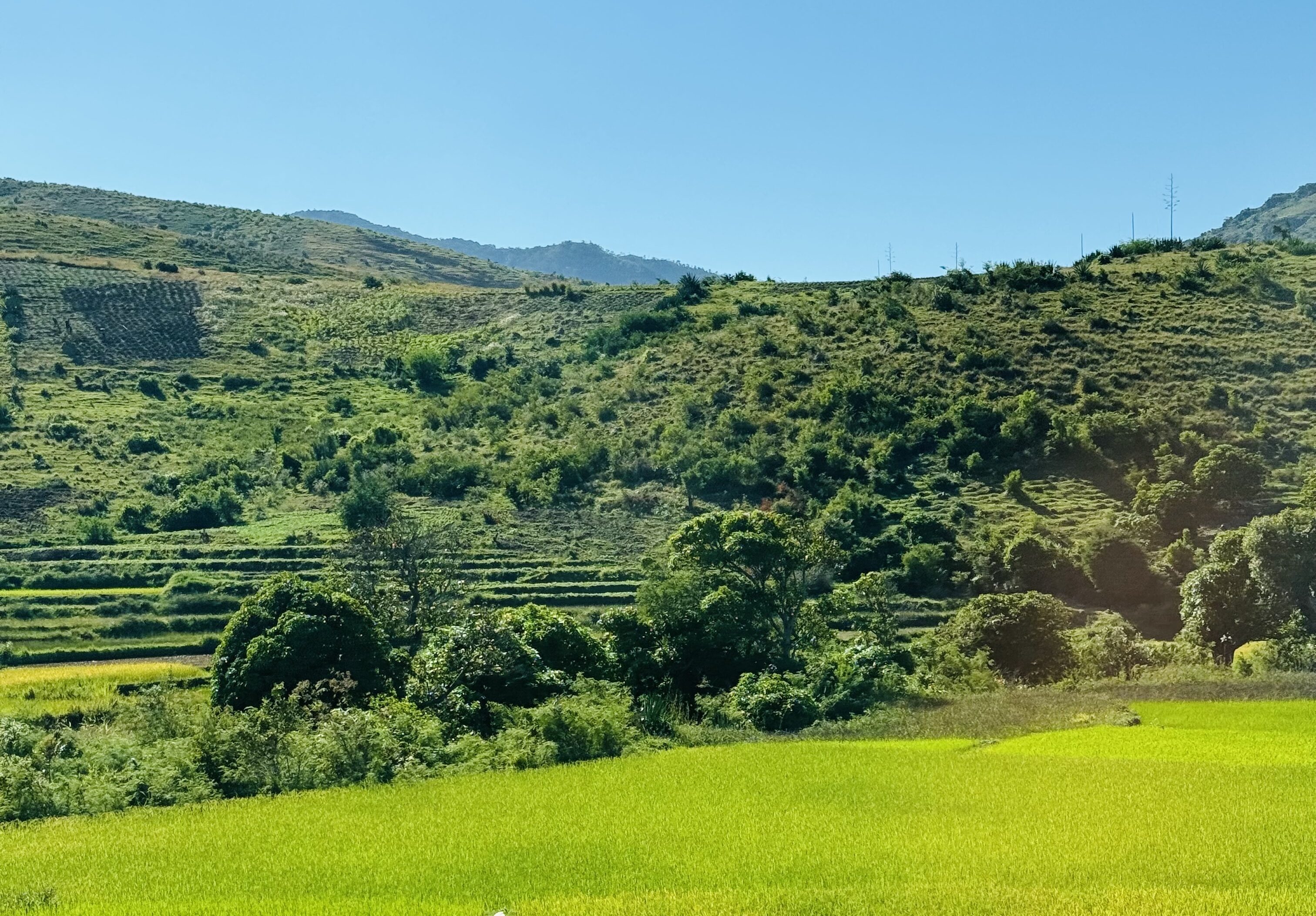
Beverly Ndifoin

Beverly Ndifoin
As the plane descended into Southern Madagascar, I looked through the window, and the arid landscape below immediately reinforced the story of prolonged drought and environmental stress that I had been researching for months. No amount of research could have prepared me for the experience I was about to have.
I was part of a graduate research team from the University of Notre Dame that set out to understand whether immediate humanitarian relief combined with development and peace-building efforts yield better food security outcomes in Madagascar and Ethiopia. My experience over the next four weeks would profoundly shape my understanding of the true meaning of human perseverance and climate resilience in places with high climate-induced food insecurity.
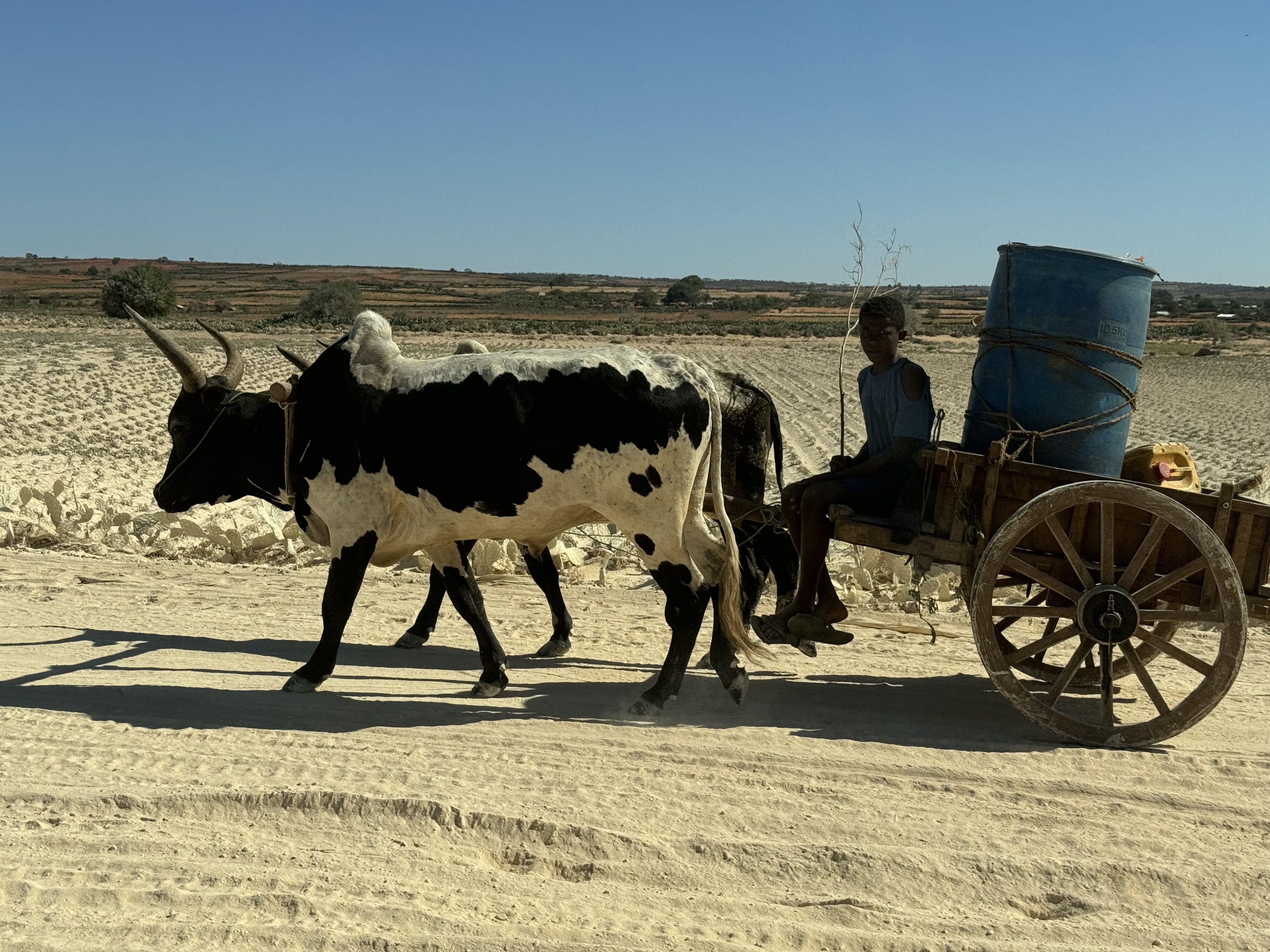
With a population of 28 million people, Madagascar is the world’s fourth largest island, located in the Indian Ocean off the coast of East Africa. According to the World Food Program (WFP), 1.31 million people in the south of Madagascar face high levels of acute food insecurity and chronic malnutrition affects nearly 40% of children.
The island is also a treasure trove of unique species, such as the baobab tree, fondly called the “upside-down tree” because of the way their thick trunks seem to grow upside down. Of the nine baobab species in the world, Madagascar is home to six different kinds that cannot be found anywhere else. Baobab also have several nutritional benefits. African baobab fruit is referred to as the “Queen of superfruits”, the seeds and the pulp both being high in vitamins, minerals, and several other unique health benefits.
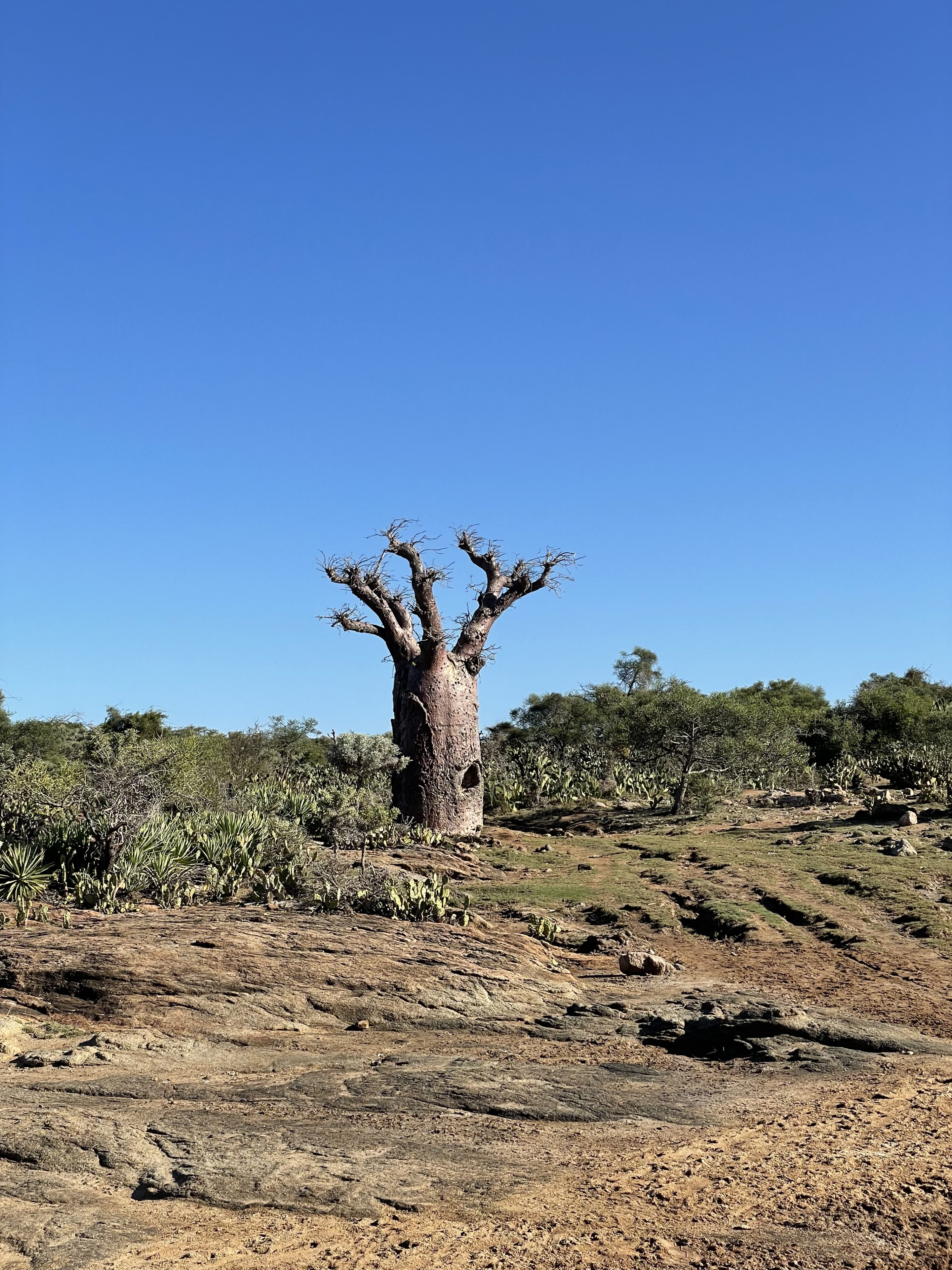
Sadly, among other deforestation drivers, forests are being cut down, burnt, and transformed into rice fields, a practice called “slash and burn.” Scientists and environmentalists warn that 38-93% of the forest in Madagascar will disappear by 2050 if they do not slow down on deforestation.
This is not just about saving trees or preserving a unique piece of our planet’s natural history. These are, of course, important. However, it is also about preserving the source of livelihood of forest-proximate indigenous peoples who depend on these forests.
Our research took us to 12 villages in Beloha District in the Southern Region, where I met Henriette, a 29-year-old single mother of two, whose story epitomized the challenges many Malagasy people face.

Looking into Henriette’s eyes under the scorching sun, I could see a blend of weariness and determination as she shared her daily struggles. “To survive, we would go into the forest to look for wild berries and eat tamarind mixed with ashes,” she said, describing life without aid from humanitarian organizations. Her words struck me deeply, turning food insecurity from abstract numbers into a visceral reality. Henriette’s day begins long before dawn, at 5 a.m., when she wakes her children for their three-hour trek to school in Ikopoky village.
Despite the hardships, education remains a priority for her family. “I keep smiling for my children, and I want to survive,” she said. So yes, real people like Henriette are behind the numbers we read about in research papers and reports.
She continued, “At the moment, we are eating cassava, but due to the lack of rain, the cassava isn’t well matured,” she said. Cassava is a harvested root consumed widely throughout the tropics. I was shocked to learn that the family’s diet is supplemented with red cactus, a fruit that she confirmed often makes them ill but is consumed out of sheer necessity.

Despite these challenges, the people demonstrate commendable resilience. Communities adapt in several ways. Some families diversify their income sources by making handicrafts to supplement their income, while others cultivate drought-resistant staples like cassava. At one of Fort Dauphin’s stunning beaches, I purchased a souvenir bracelet from a group of teenage girls who sell handmade items to support their families.
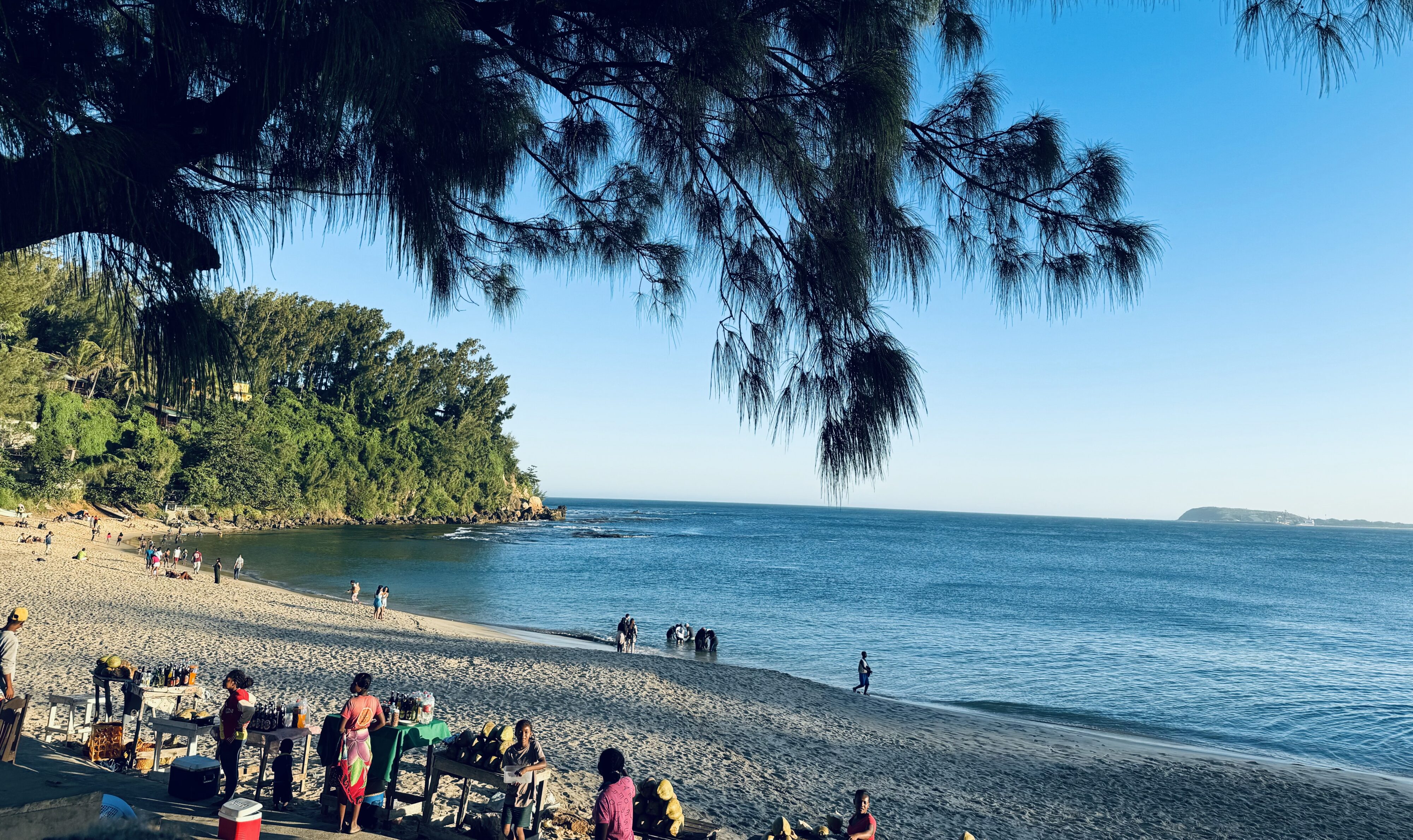
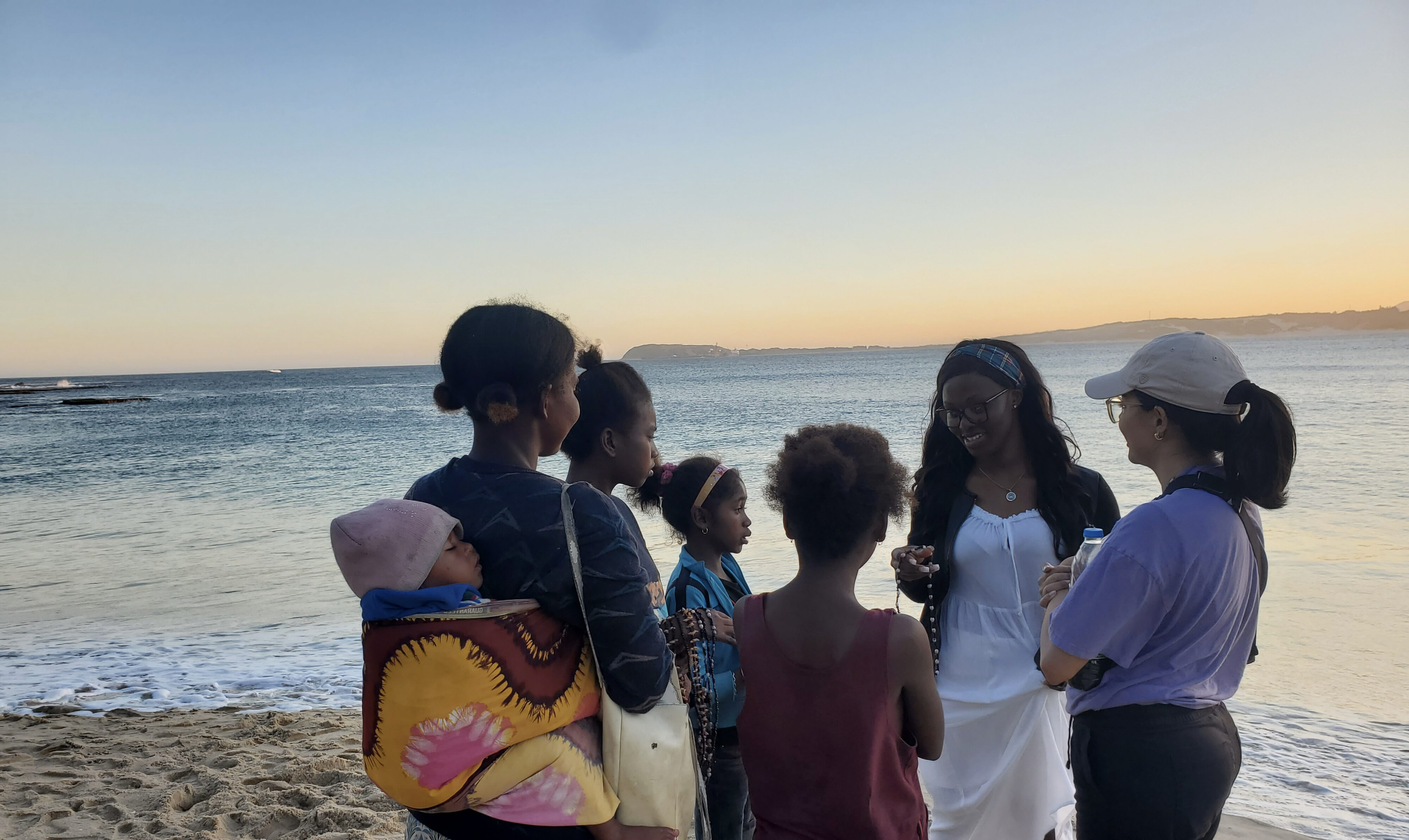
It was promising to see how the work of aid actors, mainly through food distribution programs, provided critical emergency support to communities. However, it was also clear that there is a need for long-term development solutions to address the root causes of food insecurity. Some of the plans for development solutions were echoed in our conversations with local government actors like the governor of Fort Dauphin and international development actors like the World Bank Group.

Now that I am back in school and navigating the data analysis phase of our project, I feel a combination of hope and concern, as this experience has reinforced my commitment to contributing to climate adaptation and poverty reduction. As I journey on towards a career in international development, I carry with me the weight of the faces and stories of Malagasy people and a gentle reminder of what my research advisor, Tracy Kijewski-Correa, would say when we feel overwhelmed: “As much as you want to produce an excellent academic paper from this research, always remember who you’re truly working for – those impoverished and disadvantaged communities.”